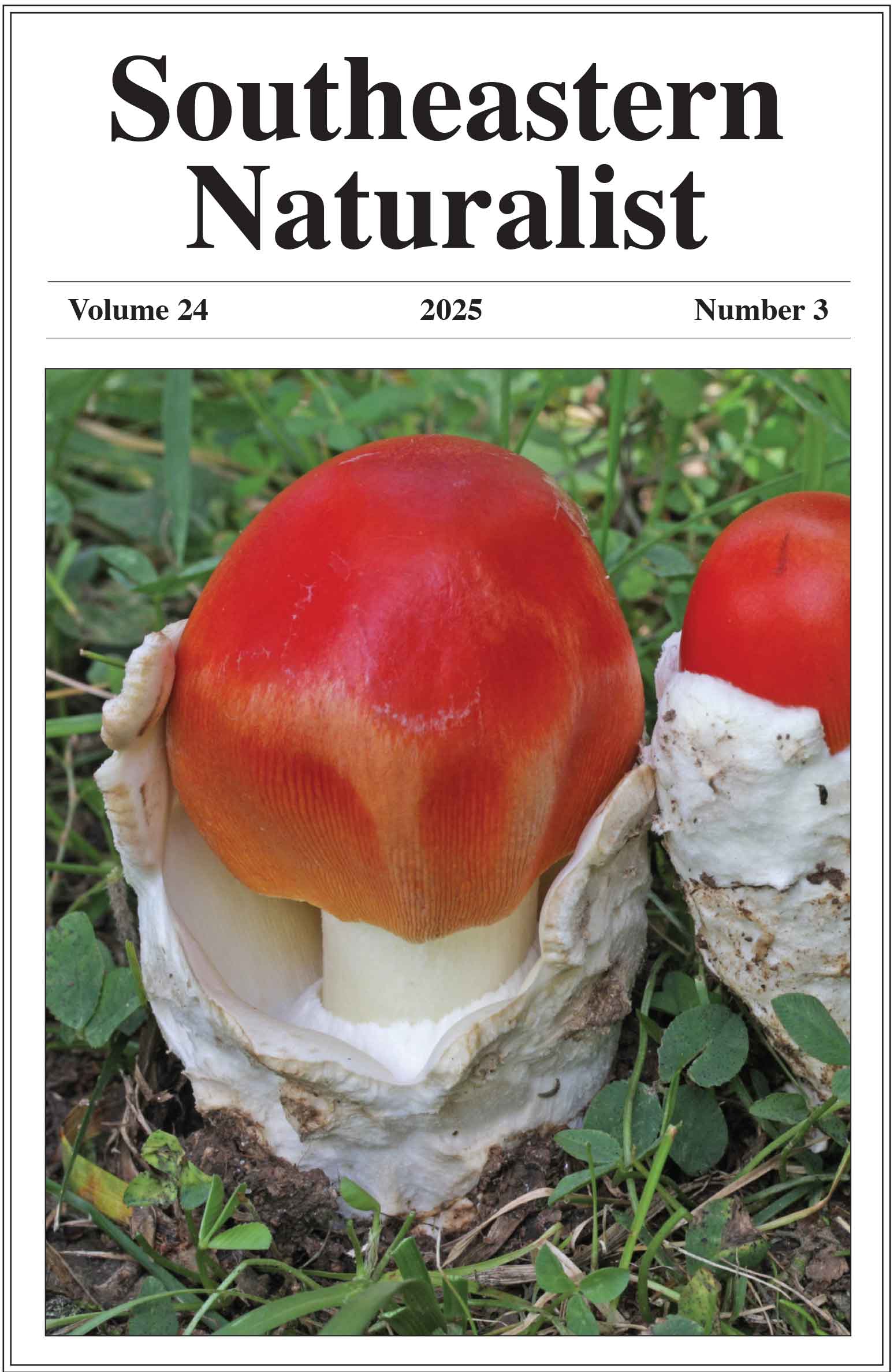Epibiosis by Florida Crown Conch (Melongena corona) on Green Sea Turtles (Chelonia mydas) in a Northern Florida Estuary
Harrison L. Hobbs1,*, Catherine B. Eastman2, Scott F. Eastman3, Edward McGinley1, and David L. Kimbro4
1Flagler College, St. Augustine, FL 32080. 2University of Florida Whitney Laboratory for Marine Bioscience, Sea Turtle Hospital, St. Augustine, FL 32080. 3Florida Department of Environmental Protection, Office of Resilience and Coastal Protection, St. Augustine, FL 32080. 4Northeastern University College of Science, Boston, MA 02115. *Corresponding author.
Southeastern Naturalist, Volume 23, Issue 4 (2024): N58–N62
First published early online: 4 December 2024
Abstract
We report the first observations of Melongena corona (Florida Crown Conch) as an epibiont attached to the carapace of juvenile Chelonia mydas (Green Sea Turtle). The Florida Crown Conch is a carnivorous marine gastropod found in benthic intertidal communities along the coast of Florida, southeastern Alabama, and parts of the Caribbean. Florida Crown Conchs have also been associated with declines in the oyster reefs in the Guana Tolomato Matanzas National Estuarine Research Reserve (GTMNERR), where both our observations were reported. Northeast Florida’s Crown Conch population is described as expanding northward in the estuary since 2010. As such, we propose that Green Turtles may be facilitating the northern expansion of the Florida Crown Conch, which would be an important dynamic to account for when designing and implementing conservation, restoration, and aquaculture programs for shellfish areas north of the GTMNERR.
![]() Download Full-text pdf (Accessible only to subscribers. To subscribe click here.)
Download Full-text pdf (Accessible only to subscribers. To subscribe click here.)
Access Journal Content
Open access browsing of table of contents and abstract pages. Full text pdfs available for download for subscribers.
Issue-in-Progress: Vol. 24( 4) ... early view
Check out SENA's latest Monograph and current Special Issue in progress:













 The Southeastern Naturalist is a peer-reviewed journal that covers all aspects of natural history within the southeastern United States. We welcome research articles, summary review papers, and observational notes.
The Southeastern Naturalist is a peer-reviewed journal that covers all aspects of natural history within the southeastern United States. We welcome research articles, summary review papers, and observational notes.